When using the OPA827AID, pins 1 and 5 are for offset voltage adjustment. You can use a potentiometer to fine-tune it for accurate output. Pins 2 and 3 are the inverting and non-inverting inputs, which should be connected to your input signal source through the appropriate resistors and feedback network. Pins 4 and 7 are for the negative (V−) and positive (V+) power supply, ensuring proper operation. Pin 6 is the output, connecting to the circuit that needs amplification—just avoid overdriving it beyond the power supply limits. Pin 8 is unused, so you don’t need to connect it.
OPA827AID hoja de datos, precio, pdf
Find the OPA827AID datasheet, latest price, and full PDF specs. Explore its low-noise, high-precision op-amp features for various analog applications.
- Tipo de amplificador: J-FET
- Número de circuitos: 1
- Tipo de salida: -
- Paquete: 8-SOIC (0,154, 3,90 mm de ancho)

Envío GRATUITO para pedidos superiores a HK$250.00

Respuesta rápida, cotización rápida.

Envío rápido, sin preocupaciones posventa.

Canal original, garantía de los productos auténticos.
OPA827 – Opamp Sound Characteristic
OPA827AID
OPA827AID is a low-noise, precision op-amp, ideal for applications that require high accuracy and low noise. With an input noise density of just 3.5nV/√Hz, it’s perfect for precise amplifications. Its offset voltage is as low as 50 μV, ensuring accuracy. With a gain bandwidth of 8 MHz, it handles higher-frequency signals easily. It has a very low input bias current of 1nA, which won’t affect your signal. It works with single supplies from 2.7V to 36V, making it great for low-power, portable systems. It’s perfect for audio amplifiers, sensor signal conditioning, or precision measurement instruments.
OPA827AID Pinout Diagram
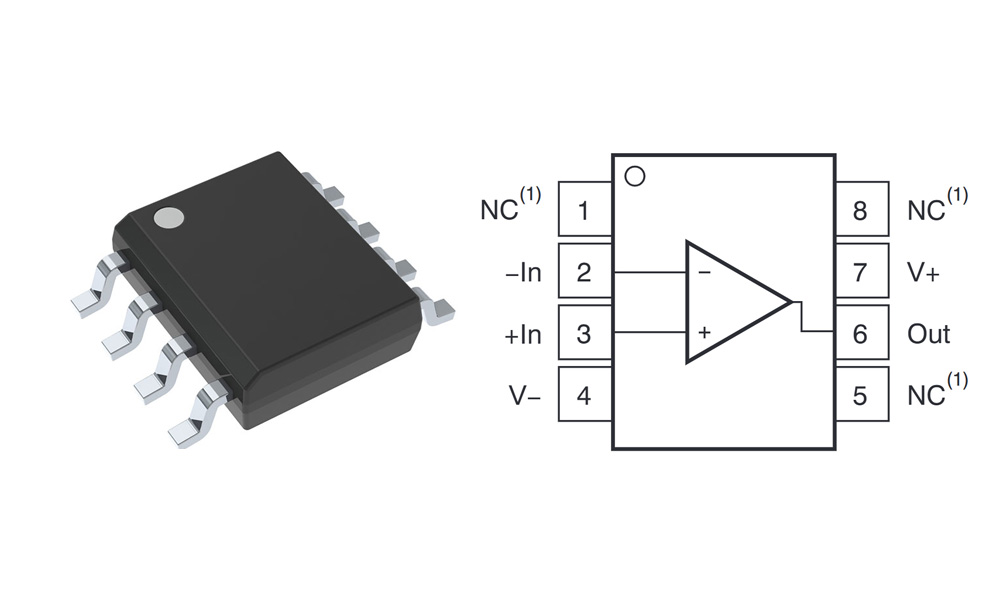
| Número PIN | Nombre | Descripción de la función |
|---|---|---|
| 1 | Offset Null | Used for input offset voltage adjustment, typically connected to a potentiometer to adjust offset voltage |
| 2 | Inverting Input (−) | Inverting input, connected to the negative end of the input signal |
| 3 | Non-Inverting Input (+) | Non-inverting input, connected to the positive end of the input signal |
| 4 | V− (Negative Supply) | Negative supply, typically connected to the negative power rail |
| 5 | Offset Null | Input offset voltage adjustment, used with Pin 1 for calibration |
| 6 | Producción | Output terminal, where the amplified signal is sent out |
| 7 | V+ (Positive Supply) | Positive supply, typically connected to a positive voltage rail (e.g., +5V or +12V) |
| 8 | NC (No Connection) | No connection, typically left unconnected |
OPA827AID Equivalent Precision Op Amp

| Parámetro/Modelo | OPA827AID | INA333 | AD8221 | LT1001 |
|---|---|---|---|---|
| Gain Bandwidth Product (GBW) | 8 MHz | 1 MHz | 1 MHz | 2.5 MHz |
| Voltaje de compensación de entrada | Max 50 μV | Max 25 μV | Max 25 μV | Max 100 μV |
| Input Bias Current | 1 nA | 1 nA | 1 nA | 100 pA |
| Open-loop Gain (Aol) | 100 dB | 100 dB | 100 dB | 120 dB |
| Rango de voltaje de suministro | ±2.7V to ±18V | 2.7V to 36V | ±2.3V to ±18V | ±5V to ±18V |
| Corriente máxima de salida | 5 mA | 1 mA | 1 mA | 5 mA |
| Rango de voltaje de entrada | Rail-to-rail | Rail-to-rail | Rail-to-rail | Rail-to-rail |
| Tipo de paquete | 8-pin DIP | 8-pin DIP | 8-pin DIP | 8-pin DIP |
| Características | High precision, low noise | Low power, low noise | High precision, low offset | Extremely high gain and precision |
If you don’t have an OPA827AID, consider INA333, AD8221, or LT1001 instead. INA333 has similar precision and lower power consumption—great for sensor applications—but its bandwidth is just 1MHz, so avoid high-speed designs. AD8221 matches OPA827AID in input offset and bias current, perfect for differential measurement circuits. LT1001 offers even higher precision but has lower bandwidth and current, ideal if you need accuracy rather than speed.
OPA827AID Amplifier Circuit Schematic
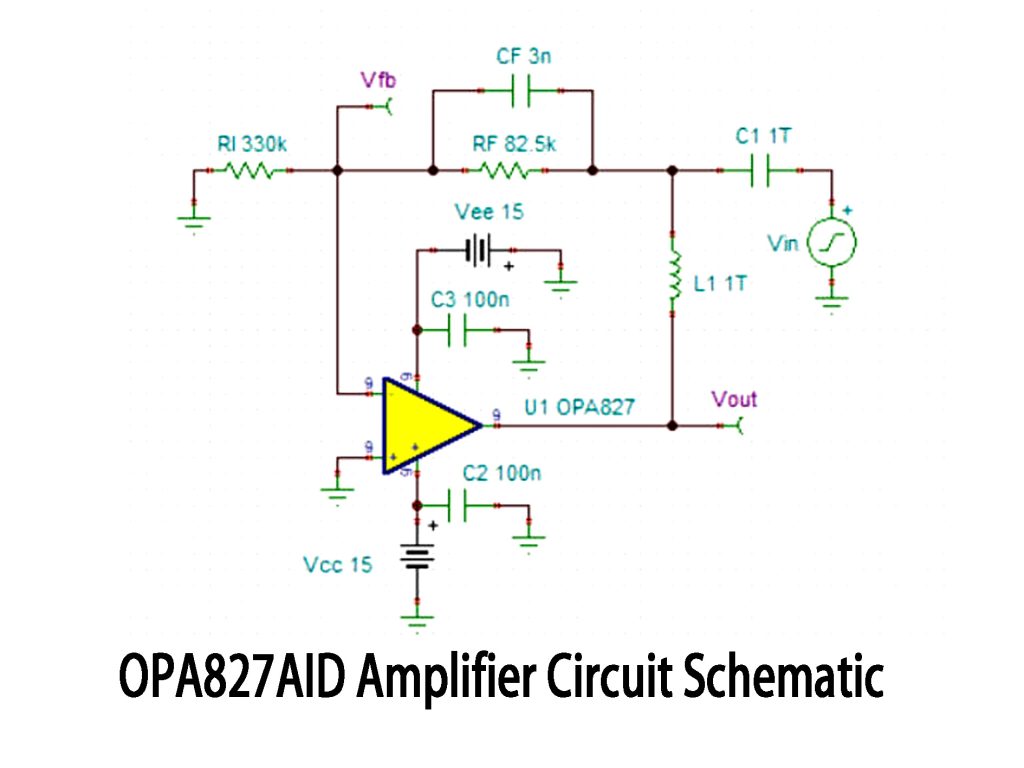
OPA827AID Audio Preamp Application
If you’re building a high-quality audio preamp, the OPA827AID is a fantastic choice. Its ultra-low noise (just 3.5nV/√Hz) means your sound stays clear and clean even at high amplification. With minimal offset voltage (around 5μV), it preserves the details and dynamics of your audio. The high gain (over 100dB) ensures accurate amplification without distortion. It’s perfect for microphone preamps, phono stages, guitar inputs, headphone amps, or DAC output buffers.
OPA827AID Low Noise Circuit Design
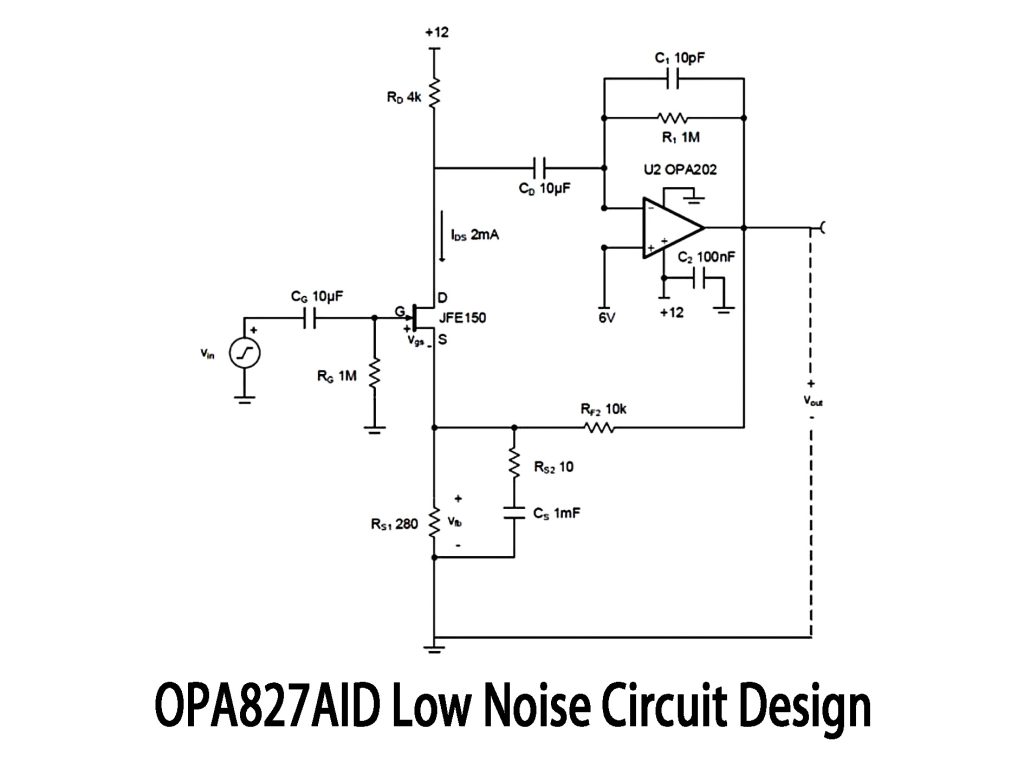
This circuit shows a classic low-noise amplifier, ideal for weak signals like sensors or microphones. A JFET transistor (JFE150) provides high input impedance and ultra-low noise buffering. After initial buffering, the signal is amplified further by an op-amp, with gain set by Rf and Rin. While the original schematic uses OPA202, replacing it with OPA827AID will significantly improve offset voltage (down to 5μV), lower input noise (3.5nV/√Hz), and increase bandwidth, giving you better signal clarity.
OPA827AID Signal Conditioning Usage
If you’re designing sensor interfaces, precise measurements, or ADC front-ends, the OPA827 is a great choice. Its FET inputs have very high impedance, perfect for high-resistance sensors. The ultra-low noise (3.5nV/√Hz) and minimal offset voltage (typical 5µV) ensure accurate and clean signals. You can use it as a voltage follower, active filter, or for offset adjustments to match your ADC range. It supports a wide supply range (±2.7V to ±18V), ideal for both portable and industrial applications.
Más como esto
Añadir también al carrito
Productos relacionados
Envíe RFQ, le responderemos de inmediato.
Copyright © 2024 Todos los derechos reservados
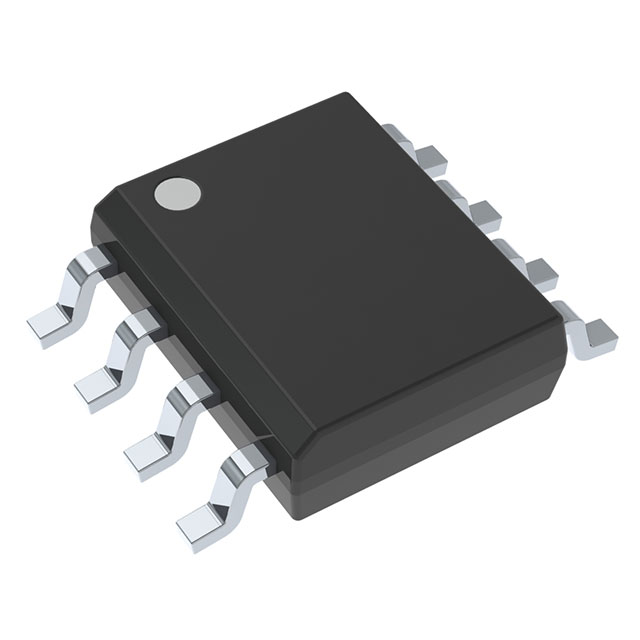




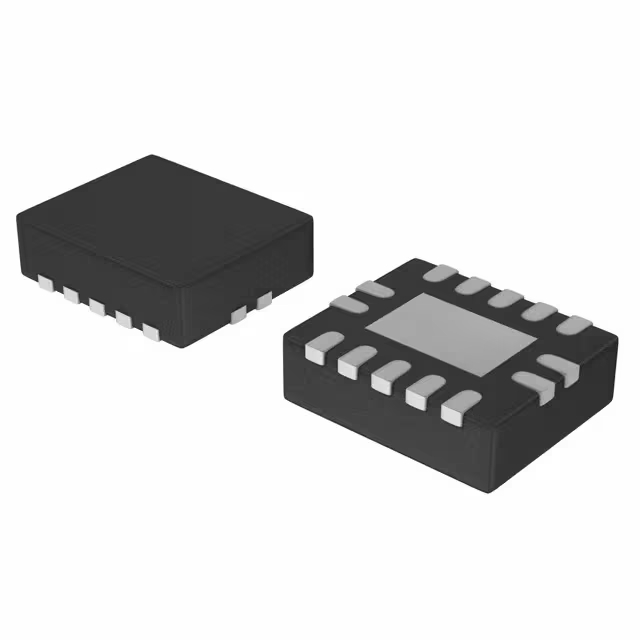





.JPG)








